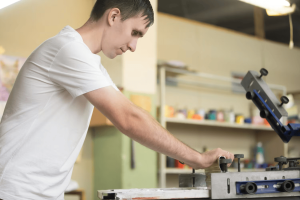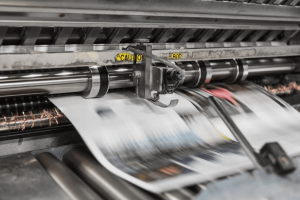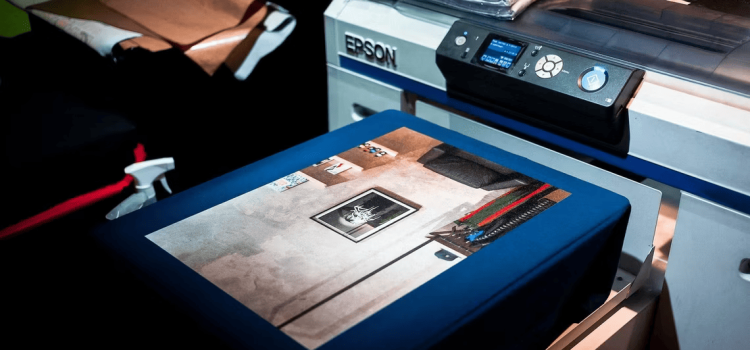
1. What Is Sublimation Printing?
Sublimation printing redefines creative possibilities through an innovative process involving solid dyes. By employing heat and pressure, these dyes transform into a gaseous state, which then sublimates onto fabric, resulting in captivating print designs.
2. Unveiling the Working Mechanism
Sublimation printers differentiate themselves by infusing dye directly into polyester-based materials. Unlike traditional methods, where colorants merely form a layer on the surface, sublimation printers chemically bond dye molecules with the material’s molecules.
Utilizing temperature-sensitive, evenly-spread dispersed dye particles, the gaseous dye bonds directly with the material’s molecules, ensuring longevity even after numerous washes. The printer’s heat press plays a crucial role in achieving this, applying both heat and pressure for effective sublimation.
3. From Design to Reality: The Printing Process
The journey of sublimation printing starts with crafting a digital design using graphic design software. Once the design is ready, it’s transferred onto special paper and placed on the material to be printed. The sublimation process takes over, as heat and pressure cause the dye to sublimate onto the fabric, creating vibrant, long-lasting prints.

4. Exploring the Potential and Limitations
Sublimation printers excel in color retention and quality post-washing, but they do have limitations. They are exclusive to polyester-based materials due to the specific chemical bonding process involved. Additionally, sublimation printing is most effective on light-colored materials, as dye-based prints require a light base.
5. Diverse Types of Sublimation Printers
a. Roll-to-Roll Sublimation Printers:
Designed for high-volume textile production, these printers continuously churn out designs on fabrics using large rolls of transfer paper.

b. 3D Sublimation Printers:
Tailored for irregular surfaces, these printers utilize heat and vacuum technology to transfer sublimation ink onto 3D objects like mugs and phone cases.
c. Desktop Sublimation Printers:
Ideal for small-scale endeavors, these printers offer convenience, affordability, and ease of setup. However, they come with a limited printing width.
d. Wide-Form
at Sublimation Printers:
Geared towards medium to large-scale printing needs, these printers provide flexibility with their larger capacity and the ability to print on sizeable transfer papers.

6. Bringing Creativity to Life
Sublimation printers empower you to infuse dye into polyester materials, resulting in captivating, enduring prints. From personalized apparel to stylish home décor and unique gift items, the possibilities are endless. Whether you’re a business owner seeking branded merchandise or an individual adding a personal touch to possessions, sublimation printers offer a world of creative opportunities.
In case you’re not ready to invest in a printer just yet, there are alternative methods to bring your designs to life on fabric.










